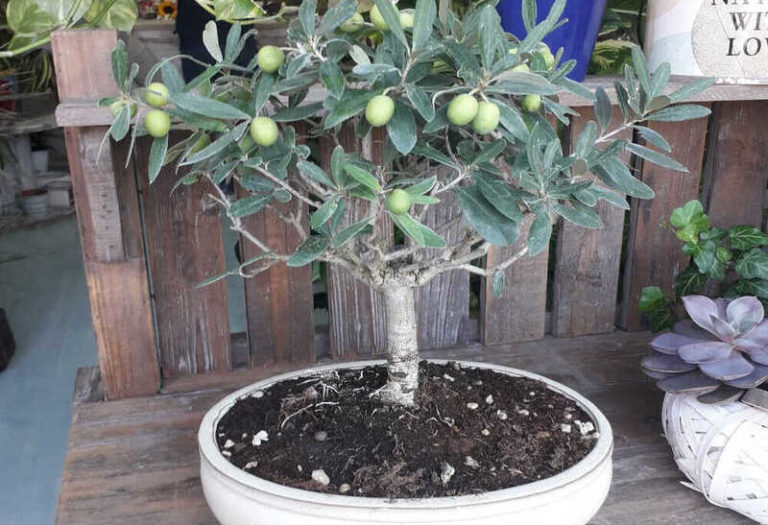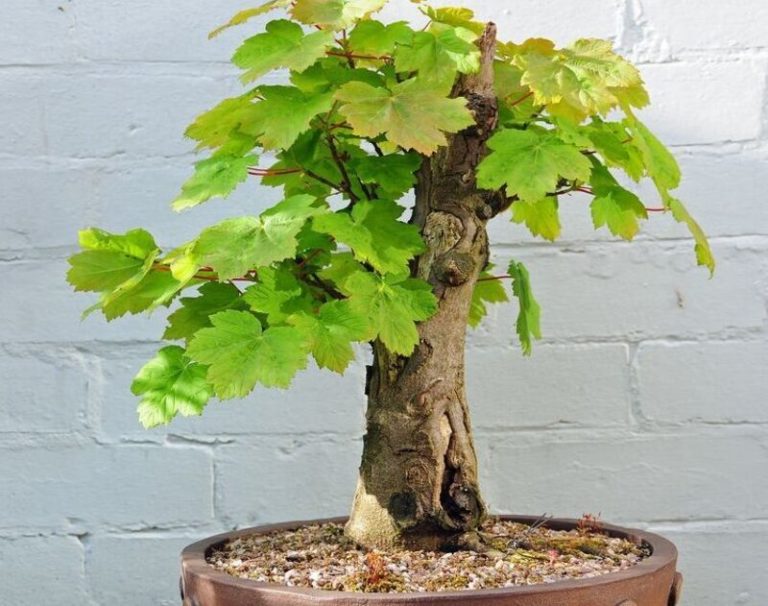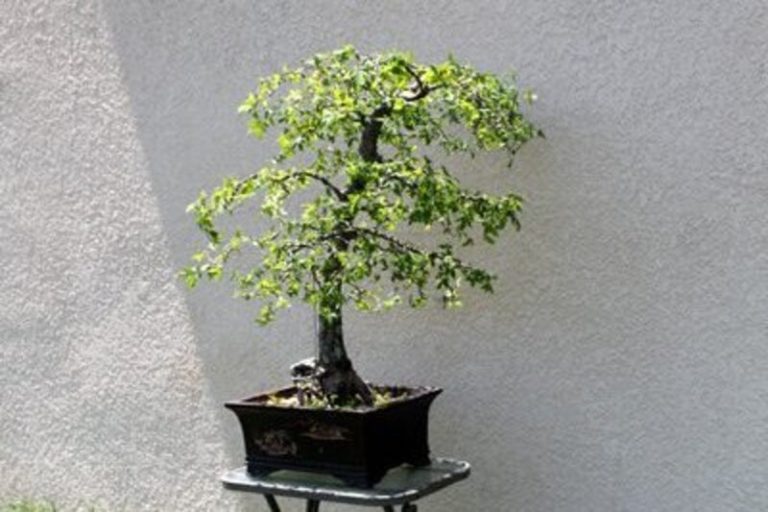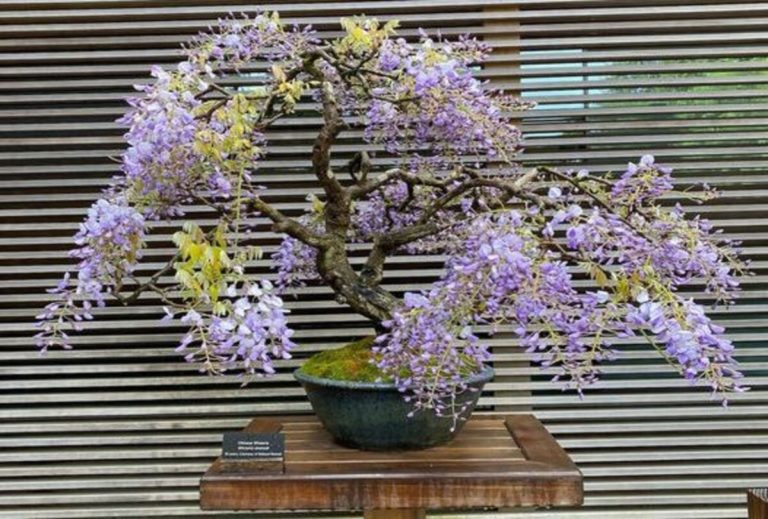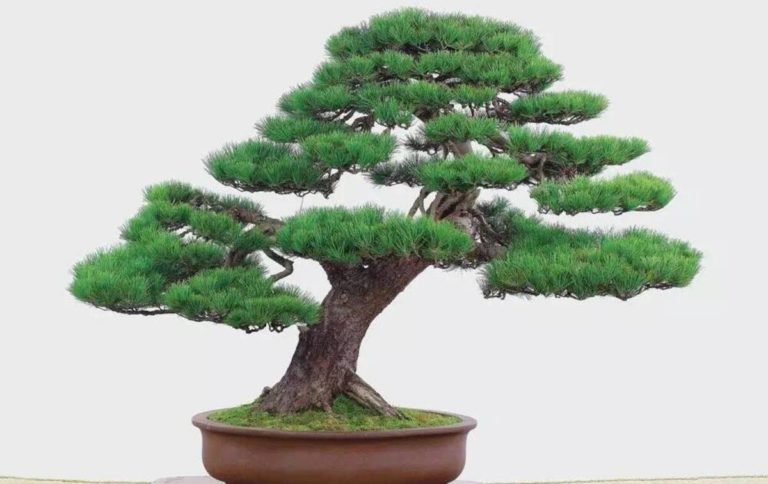Bald Cypress Bonsai: Discovering the Magic of Miniature Trees
Bald Cypress bonsai, which are small trees grown in pots, bring the beauty of nature into our homes. This guide will help you care for and style your own Bald Cypress Bonsai, no matter how much experience you have with them. Let’s talk about how fun it is to grow these beautiful bonsai trees.
What is a Bald Cypress Bonsai
A Bald Cypress Bonsai is a small tree that was grown using the art of bonsai. It is a miniature Bald Cypress tree that has been made and cut to look like a full-grown tree, though it is much smaller. Some of the techniques bonsai artists use to keep their plants small and give them a nice look are cutting and wiring. The Bald Cypress Bonsai needs a lot of care and attention to grow well, which is why bonsai fans like it so much.
History and Origins of the Bald Cypress Bonsai
The Bald Cypress Bonsai has its roots in the very old art of bonsai, which began in China more than a thousand years ago and then spread to Japan. Over time, the idea of growing small trees in pots grew to include many types of trees, such as the Bald Cypress (Taxodium distichum).
Native to North America, bald cypress trees were probably brought to the world of bonsai in the early 1900s, when the art form became famous around the world. Many people who like bonsai and gardeners saw that the Bald Cypress was a good choice for bonsai growth because of its unique traits, such as its delicate leaves and distinctive bark.
Bonsai artists have tried different ways to shape trees over the years, adding the Bald Cypress to their collection. For bonsai artists, the tree’s ability to adapt well to the process and its good looks helped it become more famous.
The Bald Cypress Bonsai is still a popular choice among bonsai fans around the world. Its beautiful look and artistic challenges make it a great choice for people who want to learn how to grow tiny trees. Its past shows that the bonsai tradition has a rich background and is still changing.
Bald Cypress Bonsai and Their Symbolism
Like other types of bonsai trees, Bald Cypress trees are not only beautiful to look at but also have a lot of meaning. The smaller trees that are grown from the larger Bald Cypress species have their own societal meanings. Let’s talk about what the Bald Cypress bonsai means:
1. Strength and Resilience: People appreciate the Bald Cypress for how strong and hardy it is, both in its natural state and as a bonsai. This meaning comes from the fact that it can survive in harsh environments, especially in swamps and marshes. As a bonsai, it tells us of how strong and determined we need to be to deal with problems in life.
2. Connection to Nature: In general, bonsai stands for a close relationship to nature. A Bald Cypress bonsai is a good example of this link because it looks like a small version of a big tree. As we take care of our Bald Cypress bonsai, we connect with nature and learn to respect its beauty and balance.
3. Longevity and Endurance: The Bald Cypress is known for its longevity, with some trees living for centuries. When cultivated as a bonsai, it symbolizes endurance, a reminder of the long journey of life, and the strength needed to withstand the tests of time.
4. Adaptability: The Bald Cypress is versatile and can adapt to different environments. In the context of bonsai, it teaches us the value of adaptability in life, the ability to embrace change, and the capacity to thrive in diverse circumstances.
5. Tranquility and Serenity: Bonsai, in general, represents tranquility and serenity. A well-maintained Bald Cypress bonsai with its gracefully curved branches, delicate foliage, and calming presence can be a source of inner peace and relaxation.
6. Reflection and Patience: Growing a Bald Cypress bonsai requires patience and reflection. As you carefully prune and shape the tree, you learn the art of patience and the rewards of taking the time to reflect on your actions, both essential qualities in the fast-paced world we live in.
7. Hope and Growth: The Bald Cypress is a deciduous tree, meaning it sheds its leaves in the fall and regrows them in the spring. This seasonal cycle can symbolize the cyclical nature of life and the hope for renewal and growth, even after setbacks.
8. Aesthetic Beauty: Beyond its symbolic meanings, Bald Cypress bonsai is also admired for its aesthetic beauty. It serves as a reminder that the pursuit of beauty and artistry is a meaningful and fulfilling endeavor.
Bald Cypress bonsai trees hold deep and varied symbolism that can resonate with individuals in different ways. Whether you cultivate one as a reflection of your inner strength, as a source of serenity, or as a symbol of hope and growth, these miniature trees offer a profound connection to nature and a reminder of life’s essential values.
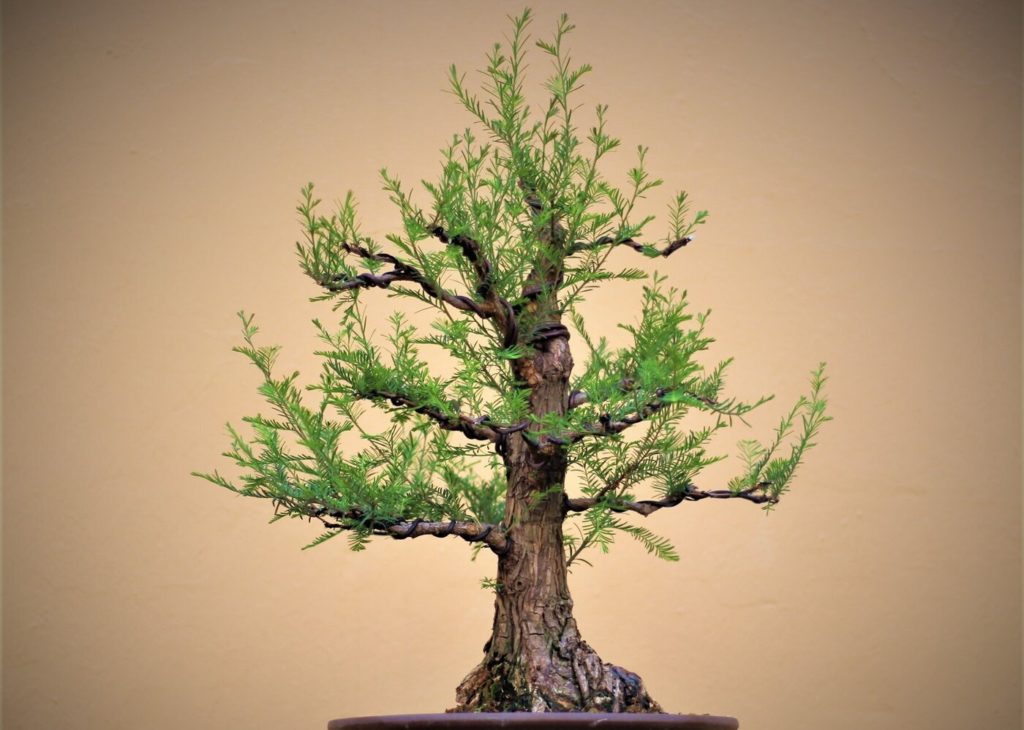
Characteristics of the Bald Cypress Bonsai
Like their full-sized cousins, Bald Cypress (Taxodium distichum) bonsai have unique qualities that make them sought-after in the world of bonsai. In addition to making them look nice, these traits also make them good for growing bonsai. Some important things about Bald Cypress bonsai are these:
1. Deciduous Nature: One thing that makes Bald Cypress bonsai stand out is that their leaves fall off in the fall. In the fall, the trees lose their needle-like leaves and show off their small, fine-textured, and delicate leaves. This change in the seasons gives the bonsai a more lively look.
2. Fine, Feathery Foliage: The leaves of a Bald Cypress bonsai are small, fluffy, and soft, which makes the tree look graceful and pretty. A key part of making a balanced and beautiful bonsai design is the fine leaves.
3. Fluted Trunk: A Bald Cypress bonsai tree’s base usually has flutes or buttresses, which are ridges and grooves that make it stand out. This unique part of the tree gives it character and age, making it look more like an old, mature tree.
4. Exposed Roots: Bald Cypress trees often grow in wet or swampy places in the wild, which can cause their roots to become higher and visible. These are called “knees.” In bonsai, these visible roots are often copied and can make the plant look better overall.
5. Fall Foliage Color: These leaves are green during the growing season, but they can change to orange, red, or brown in the fall before falling off. This change in the color of the leaves can make the bonsai look really interesting.
6. Natural Deadwood Features: As time goes on, Bald Cypress bonsai may get natural deadwood traits like holes, cracks, and weathered wood. These unique traits can give the tree a feeling of age and history.
7. Graceful Branching: Branches of a Bald Cypress bonsai are known for having beautiful, flowing curves. You can train and shape these branches to make beautiful and balanced arrangements.
8. Adaptability: Bald Cypress bonsai are very flexible and can do well in a lot of different conditions. This means that both new and expert bonsai enthusiasts can enjoy them. They can survive times of drought, earth that is too wet, and changes in temperature.
9. Size Variability: Bald Cypress bonsai trees can be very different sizes, from small desk trees to bigger, stronger trees. Because of this range of sizes, bonsai artists can pick a style that works with their tastes and the room they have.
10. Seasonal Growth Patterns: Bald Cypress trees grow in very different ways during different seasons. In the spring and early summer, they grow quickly, but as the summer goes on, they grow less quickly. This pattern of growth can change when trimming and shaping are done.
Bald Cypress Bonsai have fine foliage, fluted stems, exposed roots, fall foliage color, natural deadwood features, graceful branching, flexibility, size variability, and growth patterns that change with the seasons. These traits add to the beauty and appeal of Bald Cypress bonsai and make them a popular choice among bonsai fans who want to make beautiful and unique tiny trees.
How to Grow Bald Cypress Bonsai
Taking care of a Bald Cypress Bonsai can be fun and appealing. Here are the steps you need to take to grow a beautiful and healthy Bald Cypress bonsai:
- Getting a Young Tree: Get a young Bald Cypress tree to start. It’s possible to buy one from a nursery or get a seedling from a wild wetland. When it comes to bonsai training, young trees are more flexible and easy to shape.
- Choose the Right Pot: Pick a small bonsai pot with lots of holes in it so water can drain. The size of the pot should match the size of the young tree. Make sure the pot fits the shape and style of the tree that you want to grow.
- Pick the Right Soil: Use bonsai soil that drains well. This soil is usually a mix of things like akadama, pumice, and lava rock. The earth should be able to hold water and let air in. Put this dirt mix in the pot.
- Cutting and Pruning: Pruning is an important part of shaping and keeping the shape of your Bald Cypress bonsai. How to do it:
- Regularly prune excess branches and shoots to encourage the desired shape.
- Use sharp, clean pruning shears to make precise cuts.
- Remove any dead or unhealthy growth.
5. Wiring and Shaping: Wiring is used to form the branches and build the structure that is needed. Be careful not to hurt the trees. Silver or copper wire can be used. You might need to rewire or make changes to the wires once the branches have hardened.
6. Allow for Growth: It’s important to prune and shape your Bald Cypress, but it’s also important to let it grow and develop. If you want to keep the tree healthy and strong, prune it at the right times.
7. Light Requirements: The best light for Bald Cypress bonsai is light that comes indirect. Put your tree somewhere that will get at least 6 to 8 hours of light every day. They do better with full sun during the growing season.
8. Watering: Bald Cypress bonsai like soil that stays wet, but they don’t like being sat in waterlogged conditions. Make sure to water the tree well and let the extra water drain out of the pot. Root rot can be avoided by letting the top layer of dirt dry out a bit between watering.
9. Fertilizing: This is the time of year to use a balanced liquid fertilizer: spring and summer. When the tree is dormant in the winter, cut back on or stop feeding it.
10. Repotting: Every two to three years, usually in early spring before new growth starts, you should repot your Bald Cypress bonsai. This helps the dirt stay healthy and gives the tree’s roots more room.
11. Protection from Extreme Conditions: Keep your bonsai away from temperatures that are too hot or too cold. Bald Cypress trees are hardy, but bad weather can still hurt them.
12. Seasonal Care:Bald Cypress trees grow at different times of the year, so make sure you care for them in the right way. When the tree is growing, prune and shape it more often. When the tree is resting in the winter, do less of these things.
A Bald Cypress bonsai takes a long time to grow, so you need to be patient and dedicated. As time goes on, your tree will develop the beautiful and unique traits that make Bald Cypress bonsai so interesting. Remember that every bonsai is a work of art that will show how much you care and how creative you are. Have fun as you take care of your little tree.
Displaying and Showcasing the Bald Cypress Bonsai
Publicly showing off your Bald Cypress bonsai is a great way to enjoy its beauty and skill with other people. Here are some tips on how to show off and present your Bald Cypress bonsai properly:
1. Choosing a Display Stand: To begin, pick out a display stand or table that is right for your Bald Cypress bonsai. The stand should match the style of the tree and your general design. A lot of people choose stands made of stone or wood.
2. Placement and Lighting: Pick a spot for your bonsai that gets the right amount of light. Bald Cypress trees do best in full to partial sun, so make sure they get enough sunlight. Keep in mind that the tree needs different amounts of light at different times of the year.
3. Indoor vs. Outdoor Display: Choose whether to show off your Bald Cypress bonsai inside or outside. Many bonsai lovers leave their plants outside so they can experience the natural changes of the seasons. However, you can also put them in a sunny room inside.
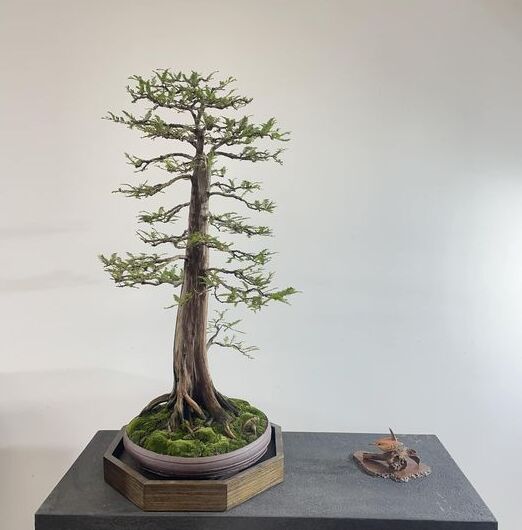
4.Turntable: A turntable that spins can be a great addition to your show. People can look at your bonsai from all sides without having to touch it. This is very helpful for bonsai shows and displays.
5. Companion Plants: You might want to add accent pieces or plants that go well with your main show. Adding rocks, moss, small ground covers, or flowering plants can make the layout look better as a whole.
6. Seasonal Changes: Let your Bald Cypress bonsai follow its own natural course. If it’s a deciduous tree, enjoy the fall colors and branches without leaves in the winter as part of the seasonal beauty of the show.
7. Exhibition and Shows: It’s important to carefully prepare your Bald Cypress bonsai for shows and exhibitions if you want to show it off. Make sure the tree has been pruned well and is in good form.
8. Maintenance: Check on and take care of your bonsai on a regular basis. Take off any dead leaves, trim as needed, and repot as needed. A tree that is well taken care of will please both the viewers and the judges.
9. Bonsai Accents: Put some figures, small lanterns, or small stones next to your Bald Cypress bonsai to make it look better. These can help you make a show that looks nice and is well-balanced.
10. Information Plaque: You could put a small plaque or sign next to your bonsai that tells people about its age, species, and any special features it has. This is very helpful for shows and displays.
11. Viewing Perspective: Set up your Bald Cypress bonsai so that its best angles and traits stand out. You should think about how people will see and interact with the tree and move it properly.
12. Regular Pruning and Care: To keep your Bald Cypress bonsai in good health and shape, keep pruning and caring for it on a regular basis. When put on show, a well-kept bonsai will look better.
13. Protection from Pests: Watch out for bugs that could hurt your bonsai. Check the tree often to make sure it doesn’t have any bugs on it.
14. Seasonal Variations: Pay attention to how your Bald Cypress tree looks and cares for as the seasons change. The way a tree looks can change with the seasons, which can be very beautiful.
By planning and taking care of your Bald Cypress Bonsai display with care, you can show off the natural beauty and artistry of your small tree, whether it’s in your home, at a show, or in an exhibition. Keep in mind that every Bald Cypress bonsai is different, and with your imagination, you can turn it into a beautiful focal point in any room.
How to Care for and Maintain a Bald Cypress Bonsai
It is very important to take care of and manage a Bald Cypress bonsai so that it stays healthy, vibrant, and looks good. If you take good care of and maintain your bonsai, it will continue to grow and thrive over time. To take care of and keep up a Bald Cypress bonsai, do the following:
1. Watering:
- Keep the soil consistently moist, but avoid waterlogging.
- Water thoroughly, ensuring that the water reaches the entire root system.
- Allow the top layer of soil to dry slightly between waterings to prevent root rot.
- Water more frequently during hot or dry periods, and reduce watering in the winter when the tree is dormant.
2. Pruning:
- Regularly prune your Bald Cypress bonsai to maintain its desired shape and size.
- Remove excess branches and shoots to encourage compact growth.
- Use sharp, clean pruning shears to make precise cuts.
- Prune more actively during the growing season (spring and summer) and less during the dormant season (fall and winter).
3. Wiring and Shaping
- Use wiring to shape and train the branches of your bonsai.
- Apply the wire gently and avoid over-tightening to prevent damaging the branches.
- Check the wiring regularly, and remove it when the branches have set in the desired position.
4. Fertilizing:
- Use a balanced liquid fertilizer during the growing season (spring and summer) to provide essential nutrients.
- Reduce or stop fertilizing in the winter when the tree is not actively growing.
5. Repotting:
- Repot your Bald Cypress bonsai every 2-3 years or as needed, typically in early spring before new growth begins.
- Repotting refreshes the soil and provides more room for the roots to grow.
- Be gentle when removing the tree from its pot to avoid damaging the root system.
6. Protection from Extreme Conditions:
- Protect your bonsai from extreme cold, heat, strong winds, and rapid temperature fluctuations.
- In very cold climates, consider providing winter protection, such as placing the bonsai in an unheated greenhouse or providing insulation.
7. Seasonal Variations:
- Bald Cypress bonsai are deciduous, so they will naturally lose their leaves in the fall. This is a normal part of their annual growth cycle, so don’t be alarmed.
- The fall coloration of the leaves can be a beautiful part of your bonsai’s appearance.
8. Pest and Disease Management:
- Regularly inspect your Bald Cypress bonsai for pests like aphids, scale, and spider mites.
- Treat any pest infestations promptly with appropriate measures, such as insecticidal soap or neem oil.
- Ensure good air circulation around the tree to prevent fungal issues.
9. Display and Aesthetics:
- If you have a dedicated display area, position your Bald Cypress bonsai to receive the right amount of sunlight and enhance its aesthetic appeal.
- Rotate the tree periodically to ensure even growth on all sides.
10. Patience and Observation:
- Bonsai care requires patience and observation. Take time to study your tree, notice its growth patterns, and adjust your care accordingly.
To take good care of a Bald Cypress bonsai, you need to pay close attention to every detail and really enjoy the art of bonsai. If you give your Bald Cypress bonsai the right care and attention, it can grow into a beautiful tiny version of nature’s beauty.
Bald Cypress Bonsai Care Sheet Table
| Aspect | Care Tips |
|---|---|
| Watering | – Keep soil consistently moist, but not waterlogged. |
| – Water thoroughly and ensure full root hydration. | |
| – Allow the top soil layer to slightly dry between watering. | |
| Sunlight | – Provide full to partial sun, depending on climate. |
| – Ensure at least 6-8 hours of daily indirect sunlight. | |
| Temperature | – Protect from extreme cold or heat. |
| – Overwinter in a sheltered, cool environment. | |
| Humidity | – Bald Cypress bonsai enjoy moderate to high humidity. |
| – Mist the foliage during dry indoor conditions. | |
| Fertilization | – Use a balanced liquid fertilizer during the growing season. |
| – Reduce or stop fertilizing during winter dormancy. | |
| Pruning and Trimming | – Regularly prune to maintain desired shape and size. |
| – More aggressive pruning during the growing season. | |
| Wiring and Styling | – Use wiring to shape and train branches carefully. |
| – Check and adjust wires as the branches set in place. | |
| Repotting | – Repot every 2-3 years, typically in early spring. |
| – Refresh the soil mix and provide room for root growth. | |
| Pest and Disease Control | – Inspect for pests regularly (aphids, scale, spider mites). |
| – Treat pest issues with appropriate measures. | |
| Winter Care | – Provide winter protection in very cold climates. |
| – Avoid exposing to freezing temperatures and strong winds. | |
| Regular Maintenance | – Regularly check the tree for overall health and shape. |
| – Maintain a clean and aesthetically pleasing appearance. |
This care sheet is a summary of the most important parts of taking care of your Bald Cypress bonsai. It includes useful tips to keep it healthy and thriving. Remember that the way you care for your bonsai will depend on its needs and the climate where you live, so use these rules as a guide.
Conclusion
The Bald Cypress Bonsai is a wonderful representation of the natural world in miniature. By following these simple steps and being patient, you can create your own piece of living art that will bring beauty and tranquility to your life. Happy bonsai gardening!
FAQ
1. What is a Bald Cypress Bonsai?
A: A Bald Cypress Bonsai is a miniature tree cultivated from the larger Bald Cypress species (Taxodium distichum). It is an art form that involves shaping and training a small tree to create a balanced, aesthetically pleasing, and healthy miniature version.
2. Where can I get a Bald Cypress Bonsai?
A: You can obtain a Bald Cypress Bonsai from specialized bonsai nurseries, online bonsai retailers, or by growing one from a young tree obtained from a nursery or collected from the wild.
3. Do Bald Cypress Bonsai shed their leaves like the full-sized trees?
A: Yes, Bald Cypress Bonsai, like their full-sized counterparts, are deciduous. They shed their needle-like leaves in the fall, displaying a delicate and fine-textured appearance.
4. What is the best soil mix for Bald Cypress Bonsai?
A: A well-draining bonsai soil mix composed of components like akadama, pumice, and lava rock is ideal for Bald Cypress Bonsai. It provides good aeration and water retention.
5. How often should I water my Bald Cypress Bonsai?
A: Keep the soil consistently moist, but avoid waterlogging. Water thoroughly, and allow the top layer of soil to dry slightly between waterings. Frequency may vary with climate and season.
6. Can I keep my Bald Cypress Bonsai indoors?
A: While it’s possible to keep them indoors, Bald Cypress Bonsai thrive when they receive plenty of sunlight. They are typically best grown outdoors, where they can experience natural seasonal changes.
7. When and how should I prune my Bald Cypress Bonsai?
A: Prune your bonsai regularly to maintain its desired shape and size. More aggressive pruning is done during the growing season (spring and summer). Use sharp, clean pruning shears for precise cuts.
8. Is wiring necessary for styling a Bald Cypress Bonsai?
A: Wiring is often used to shape and style the branches of a Bald Cypress Bonsai. It’s a common practice, but be gentle with the branches to avoid damaging them.
9. How often should I repot my Bald Cypress Bonsai?
A: Repot your Bald Cypress Bonsai every 2-3 years, usually in early spring before new growth starts. This helps refresh the soil and provide room for root growth.
10. What are common pests and diseases that affect Bald Cypress Bonsai?
A: Common pests include aphids, scale insects, and spider mites. Regular inspections can help you identify and treat these issues promptly.
11. How do I protect my Bald Cypress Bonsai during the winter?
A: If you live in a very cold climate, provide winter protection, such as placing the bonsai in an unheated greenhouse or insulating it to shield it from freezing temperatures and strong winds.
12. Can I display my Bald Cypress Bonsai in a Bonsai show or exhibition?
A: Yes, you can showcase your Bald Cypress Bonsai in exhibitions or shows, but prepare the tree carefully by ensuring it’s well-pruned and in its prime shape.
Also Read:



